You are using an out of date browser. It may not display this or other websites correctly.
You should upgrade or use an alternative browser.
You should upgrade or use an alternative browser.
China's Space Program Thread II
- Thread starter Blitzo
- Start date
by78
General
In a first for China, a commercial astronaut training and evaluation program has been .

On December 30, the Deep Space Branch of the China Exploration Association released the "Commercial Astronaut Grade Evaluation and Training Specifications", and China's first commercial astronaut training program was launched.
The training norms for domestic commercial astronauts are established by the China Exploration Association based on the domestic and foreign astronaut training systems. The training content includes: cognitive training, aerospace environment endurance and adaptability training, survival training, situational expansion training and mission simulation training.
The training will add space-themed elements on the basis of the existing activities of the China Exploration Association, and create the space adaptability and accomplishment that commercial astronauts should possess, so as to meet the needs of commercial astronauts with different roles to enter space.
In the activities of commercial astronauts, different tasks have different requirements for quality and ability, and the content of training is also different accordingly. Therefore, they are divided into four types of roles: space experience officer, space mission expert, commercial spaceflight engineer, and commercial astronaut. Aerospace pilot.
Commercial astronauts will master the basic knowledge of manned spaceflight during the training process, adapt to different degrees of overweight, weightlessness and space flight environments, and have the ability to rescue themselves and each other in an emergency.
All over the world, countries and companies have sent ordinary people into space.
From 2001 to 2009, the Russian Soyuz spacecraft transported seven passengers to the International Space Station; on July 11, 2021, Virgin Galactic sent five crew members including founder Branson into space; Amazon founder Jeff Bezos also completed a space flight on a vehicle owned by his company
Currently, there are six international commercial aerospace companies that are arranging or planning to arrange space tourism, including Virgin Galactic, Blue Origin, Space Exploration Technologies (SpaceX), Boeing, Axiom Space and Space Perspective.
Industry ARC reports that the space tourism market is expected to reach $1.3 billion by 2025. Space industry consultancy NSR expects the suborbital market to be worth $2.8 billion by 2028, with a total revenue of $10.4 billion over the next decade. The orbital market will reach $610 million, with total revenues of $3.6 billion over the next ten years.
UBS Group (UBS) released a report saying that by 2030, the space travel market will reach 3 billion US dollars, and the prospects for space travel and long-distance travel using space are even brighter.
The white paper "China's Aerospace in 2021" proposes that in the next five years, China's aerospace industry will cultivate and develop new forms of space economy such as space tourism, and improve the scale benefits of the aerospace industry.
Cheng Wei, president of the Deep Space Branch of the China Exploration Association, said that the "Commercial Astronaut Grade Evaluation and Training Specification" aims to systematically train Chinese commercial astronauts. Taking the training of Chinese astronauts as the basis of the knowledge system training, at the same time, by simulating different space environments and possible situations, a series of scenario simulation courses are carried out, and according to the training tasks that quasi-commercial astronauts need to complete and the flight duration and The number of commercial astronauts is divided into grades, and each level of astronaut training is targeted to provide step-by-step training methods and content, covering and solving various difficulties in human space exploration, and breaking through them one by one.
Cheng Wei said that through this level of evaluation and training specifications, all indicators and capabilities of commercial astronauts will be improved in an all-round way, preparing for the arrival of the commercial space 3.0 era, and realizing the "flying dream" of all mankind.
A few days ago, Cheng Wei mentioned in an exclusive interview with Jiemian News that most of the civilian astronauts in the United States are wealthy, and the cost of going to the sky is tens of millions of dollars each time. The cost of space tourism is far from falling, but it must be viewed from a dynamic perspective. The cost of spacecraft will drop in the future.
"In China, in the early stage of the development of individual space tourism, it may be mostly sponsored by the state and enterprises, not necessarily funded by the individual. If you participate in the name of an individual, the basic training will be at least 5 million yuan." Cheng Wei said that the industry has done more at present. It is to seek the opportunity to go to heaven. In this process, the key is to let everyone have the basic conditions to go to heaven.
Cheng Wei believes that "going to heaven" should be viewed in units of ten years, and built on the basis of 2-3 years, and the goal of truly going to heaven can only be achieved in ten years. But even if many people enter the program, they may not have the chance to go to heaven. Everyone should accept this reality.
Zhao Chuandong, the first batch of Chinese astronauts, said at the above-mentioned release event that space tourists can go to space to experience as long as they go through a basic physical examination and relatively systematic training, master the basic theory and knowledge of spaceflight, and have the basic ability to deal with the space environment. The feeling of weightlessness, looking back at the home of the earth.
In the future, Qinghai Lenghu Mars Town will become a base for simulated training of commercial astronauts. At the same time, Shandong Haiyang Oriental Aerospace Port will serve as the home port of the commercial astronaut training program and carry out space tourist simulation experience projects.

by78
General
A press blurb. A prototype second-stage engine (YF-100M) for the next generation manned rocket has successfully completed its first 'full system' test run.

【新一代载人火箭二级发动机YF-100M完成初样整机状态首次试车】2022年12月28日,某型号液氧煤油发动机试车圆满成功,试车目的为考核发动机系统方案,初步验证起动、关机方案的合理性,组件匹配性和工作协调性。本型号发动机为新产品型号,参试人员仔细梳理任务书要求,对产泵前管路、吹除系统、电动气阀和电爆管、液氧系统等进行了检查和测试,试验数据全部获得,为该型发动机后续研制奠定了基础...

by78
General
Another press blurb about the 85-ton YF-102 LOX/Kerosene engine. A pre-delivery verification test run has been completed successfully on a production engine before its delivery.
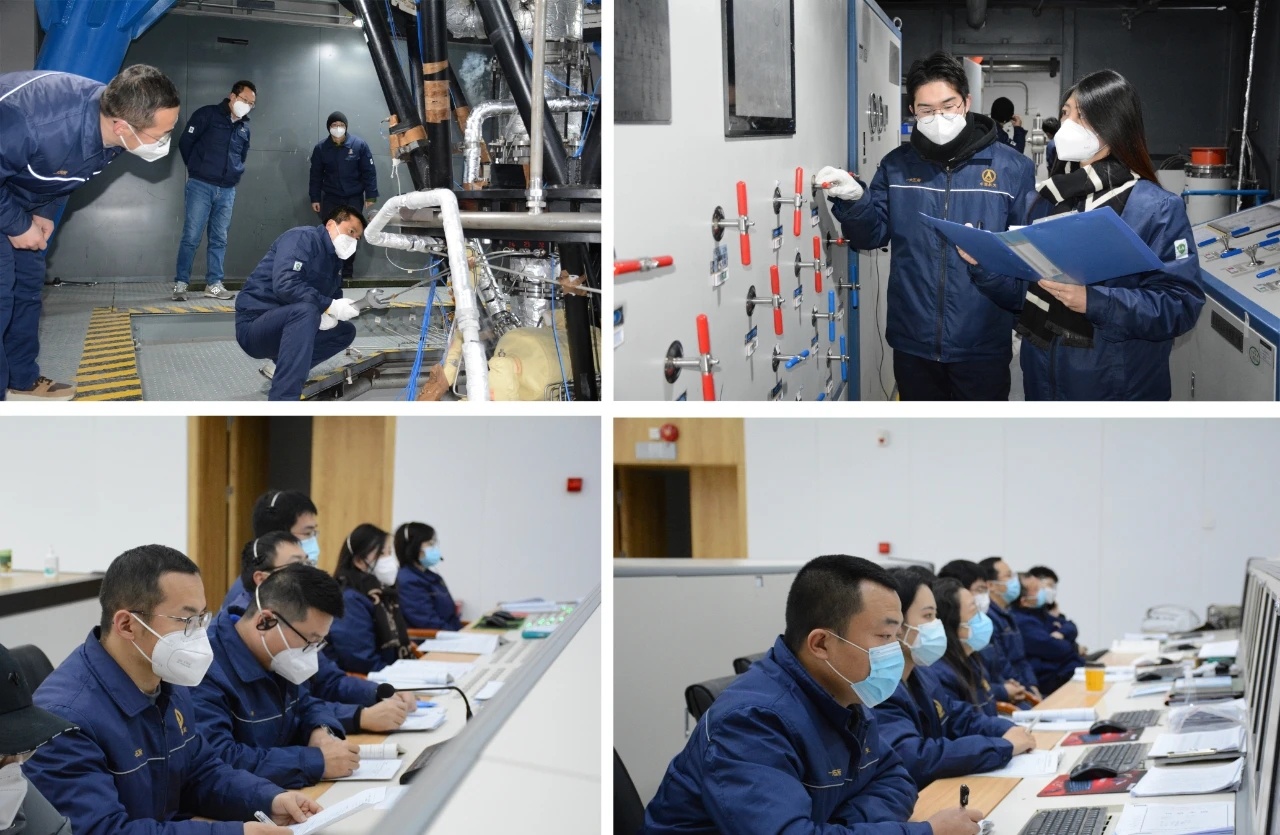
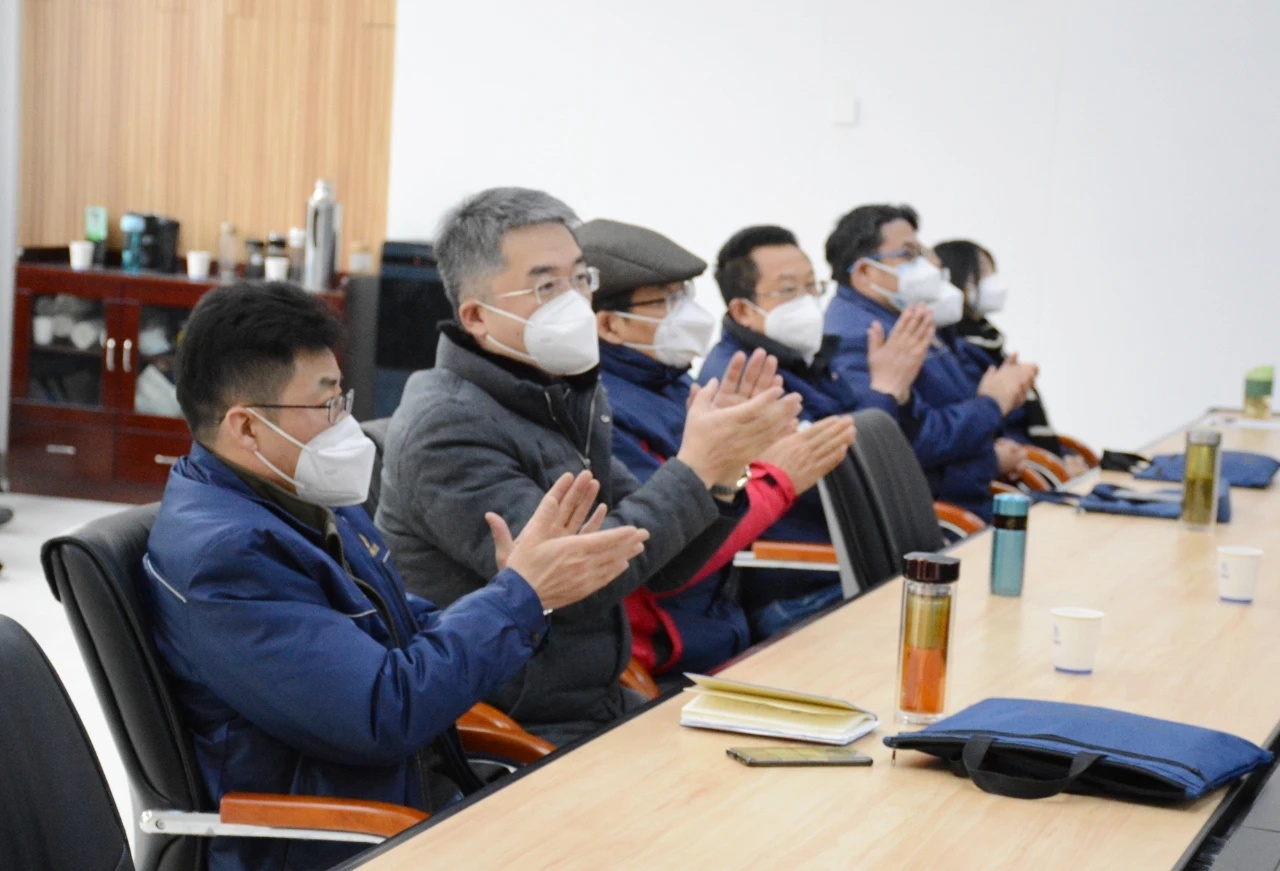
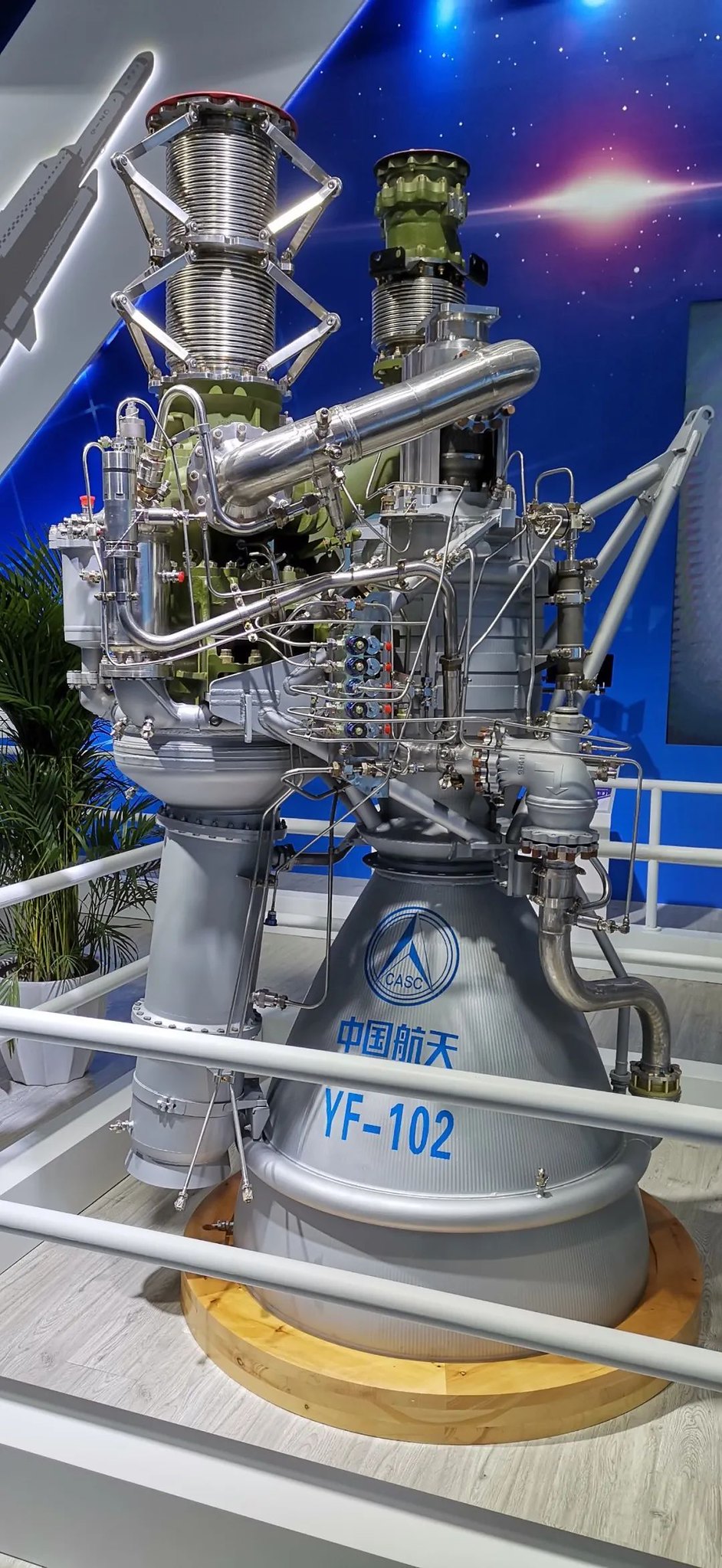
【85吨级YF-102开式循环液氧煤油发动机首台交付产品工艺试车圆满成功】12月29日上午,抱龙峪试验区920试验台完成某新型号大推力液氧煤油发动机首台交付产品工艺检定试车,试车取得圆满成功。
自2018年立项以来,该发动机已完成11台单机研制试车、6台工艺试车、共40次点火,累计时长3536s;单台考核最多6次、834s,单次最长500s;80吨及以上工况单台试车时间451s、累计试车时间超过800s;首台交付产品工艺检定试车于2022年12月29日取得圆满成功,第二台已组装完成具备交付条件。
目前,YF-102可用于商业演示验证飞行试验和小批量应用,针对该发动机的研制生产,正在筹建批产能力,主要用于商业航天发动机的销售和技术服务工作,可满足不同总体用户需求。
[The first 85-ton YF-102 open-cycle liquid oxygen kerosene engine delivery product process test run was a complete success] On the morning of December 29, the 920 test bench in the Baolongyu test area completed the first delivery of a new type of high-thrust liquid oxygen kerosene engine Product process verification test run, the test run was a complete success.
Since the project was established in 2018, the engine has completed 11 stand-alone developmental test runs, 6 process test runs, for a total of 40 ignitions and a cumulative duration of 3536s; a single test has a maximum of 6 times, 834s, and a single maximum of 500s; 80 tons and above The test run time of a single unit is 451s, and the cumulative test run time exceeds 800s; the process verification test run of the first delivered product was a complete success on December 29, 2022, and the second unit has been assembled and is ready for delivery.
At present, YF-102 can be used for commercial demonstration and verification flight tests and small-batch applications. For the development and production of this engine, mass production capacity is being established. It is mainly used for sales and technical services of commercial aerospace engines, which can meet the needs of different overall users.



The most comprehensive list of liquid engines published by CASC:
500吨/240吨级液氧煤油发动机
2022年重要进展:11月5日,首次整机试验成功
1. YF-130 and its variant (?) 240t/500t staged kerolox
It confirms that 240t kerolox is indeed single-chamber version of YF-130. The first complete test was conducted on 11/05/2022.
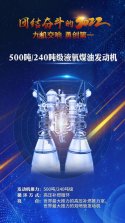
220吨/120吨级大推力液氢液氧发动机
2022年重要进展:继2021年实现首次半系统试验成功后,2022年又完成整机齐套
2. YF-90 and its variant 220t/120t staged hydrolox engine
Somehow the mysterious 120t LH2 engine is a variant of YF-90 and the variant is supposed to be second stage of latest CZ-9 design.
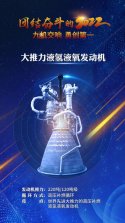
3. 200t FFSC metholox engine200吨级液氧甲烷发动机
2022年重要进展:总体方案得到进一步优化,燃烧装置第一阶段点火试验成功
Successful ignition test of the first stage of the combustion unit in 2022 (?)
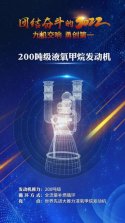
某新型大推力发动机
2022年重要进展:继2021年10月首次整机试验成功后,2022年又多次收获整机试验成功捷报,进一步验证和提升了发动机性能参数
4. YF-135 360t staged kerolox engine
The first joint test was successfully conducted on 05/10/2022.
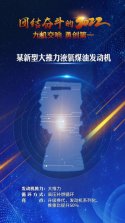
by78
General
Here's a complete list. Apologies for the machine translation, as I'm short on time:
2. The 500-ton high-pressure supplementary combustion cycle liquid oxygen kerosene engine YF-130 completed its first complete machine test run on November 5, 2022
3. The 220-ton high-pressure afterburning cycle liquid hydrogen and liquid oxygen engine YF-90 completed the first semi-system test on September 23, 2021; complete the complete set in 2022
4. The 360-ton high-pressure supplementary combustion cycle liquid oxygen kerosene engine YF-135 successfully completed the first joint test on May 10, 2022
5. The high-thrust supplementary combustion cycle conventional engine was successfully tested for the first time in October 2021; in 2022, many successful reports of complete machine tests were obtained, further verifying and improving engine performance parameters
6. The 85-ton open-cycle liquid oxygen kerosene engine YF-102 was successfully tested on November 3, 2022.
7. The 80-ton open cycle liquid oxygen methane engine YF-209 completed the first complete machine test run on November 5, 2022
8. The 8-ton afterburning cycle conventional engine was successfully tested for the first time on April 16, 2022
9. The 25-ton closed-type expansion cycle liquid hydrogen and liquid oxygen engine YF-79 completed the first complete machine test on September 5, 2022; the whole system test was completed on November 16, 2022.

1. The overall plan of the 200-ton full-flow afterburning cycle liquid oxygen methane engine will be further optimized in 2022, and the first-stage ignition test of the combustion device will be successful航天六院“八年九机”火箭发动机最新研制进展:
❶200吨级全流量补燃循环液氧甲烷发动机在2022年总体方案得到进一步优化,燃烧装置第一阶段点火试验成功
❷500吨级高压补燃循环液氧煤油发动机YF-130在2022年11月5日完成首次整机试车
❸220吨级高压补燃循环液氢液氧发动机YF-90在2021年9月23日完成首次半系统试验;2022年完成整机齐套
❹360吨级高压补燃循环液氧煤油发动机YF-135在2022年5月10日,首次联试试验成功
❺大推力补燃循环常规发动机在2021年10月首次整机试验成功;2022年多次收获整机试验成功捷报,进一步验证和提升了发动机性能参数
❻85吨级开式循环液氧煤油发动机YF-102在2022年11月3日,全箭动力系统试验成功
❼80吨级开式循环液氧甲烷发动机YF-209在2022年11月5日完成首台整机试车
❽8吨级补燃循环常规发动机在2022年4月16日,首次整机试车成功
❾25吨级闭式膨胀循环液氢液氧发动机YF-79在2022年9月5日完成首次整机试车;2022年11月16日完成全系统试验
2. The 500-ton high-pressure supplementary combustion cycle liquid oxygen kerosene engine YF-130 completed its first complete machine test run on November 5, 2022
3. The 220-ton high-pressure afterburning cycle liquid hydrogen and liquid oxygen engine YF-90 completed the first semi-system test on September 23, 2021; complete the complete set in 2022
4. The 360-ton high-pressure supplementary combustion cycle liquid oxygen kerosene engine YF-135 successfully completed the first joint test on May 10, 2022
5. The high-thrust supplementary combustion cycle conventional engine was successfully tested for the first time in October 2021; in 2022, many successful reports of complete machine tests were obtained, further verifying and improving engine performance parameters
6. The 85-ton open-cycle liquid oxygen kerosene engine YF-102 was successfully tested on November 3, 2022.
7. The 80-ton open cycle liquid oxygen methane engine YF-209 completed the first complete machine test run on November 5, 2022
8. The 8-ton afterburning cycle conventional engine was successfully tested for the first time on April 16, 2022
9. The 25-ton closed-type expansion cycle liquid hydrogen and liquid oxygen engine YF-79 completed the first complete machine test on September 5, 2022; the whole system test was completed on November 16, 2022.

I told you1. YF-130 and its variant (?) 240t/500t staged kerolox
It confirms that 240t kerolox is indeed single-chamber version of YF-130. The first complete test was conducted on 11/05/2022.
This solves the mystery of the progress of 120t. It is almost in the same stage as YF-90.2. YF-90 and its variant 220t/120t staged hydrolox engine
Somehow the mysterious 120t LH2 engine is a variant of YF-90 and the variant is supposed to be second stage of latest CZ-9 design.

I have posted this news in nuclear thread on DF-5C development then realized there is actually something bigger in this news.
On 05/10/2022, CASC No.6 Institute successfully conducted the first gas generator-turbine pump joint test of a kerosene engine, which is the main engine for next-gen rocket launch vehicle. The program was formally approved in 03/2019.
3D printer parts make up 25% of this fully-digitalized engine, such as oxygen valve...
This engine has 80% chance to be YF-135 as all other kerosene engines have already entered hot test phase except YF-135.
Also the chief designer of YF-130 is Chen Hui, and the chief designer of YF-100 series is Liu Zhanguo as chief designer of this particular engine is Yang Yalong.
YF-130 entered the same phase on 08/01/2016, so there is a 6-year gap between YF-130 and YF-135 though we didn't know if the research on YF-130 would accelerate the development of YF-135. My conservative estimation is no earlier than 2027 to see the first hot test of YF-135, so I highly doubt CASC could proceed with altered rocket plan before 2030.
First gas generator-turbine pump joint test First engine hot test First flight YF-100 2000 07/03/2006 09/20/2015 YF-130 08/01/2016 11/05/2022 YF-135 05/10/2022
I told you, they are siblings not parent and child.
My YF-135 theory was also right. The engine test on 05/10/2022 is indeed YF-135.
Machine translation: YF-135, a fully-digital lox/kerosene engine has used 3D printed components, which carries more than 25% of the total weight, such as oxygen main valve, flow regulator housing, general assembly lightweight clamps, etc.其中下一代运载火箭主用全数字化液氧煤油发动机整机已采用3D打印的组件总重量超过发动机总重25%,如氧主阀、流量调节器壳体、总装轻质化卡箍等。
Also the official news state thrust/weight ratio was improved by 50%, I must confess it is a very significant improvement if they are using YF-130 as baseline here. Notably, the previous slide clearly shows that T/W ratio should be around 90 in 2030 whereas YF-130 is supposed to be around 78 and YF-100 around 63.7. Either way, it is higher and faster than planned.
Single chamber does have the advantage of being lighter than a two chamber design with the same fabrication method due to the reduced plumbing and the cooling tubes around the nozzles. On top of that you have the increased portion of 3D printed components which saves a lot of mass too. So 50% improvement is impressive, but IMO not surprising. It is for all these reasons that YF-135 is regarded by some as the king of all engines.Also the official news state thrust/weight ratio was improved by 50%, I must confess it is a very significant improvement if they are using YF-130 as baseline here. Notably, the previous slide clearly shows that T/W ratio should be around 90 in 2030 whereas YF-130 is supposed to be around 78 and YF-100 around 63.7. Either way, it is higher and faster than planned.

